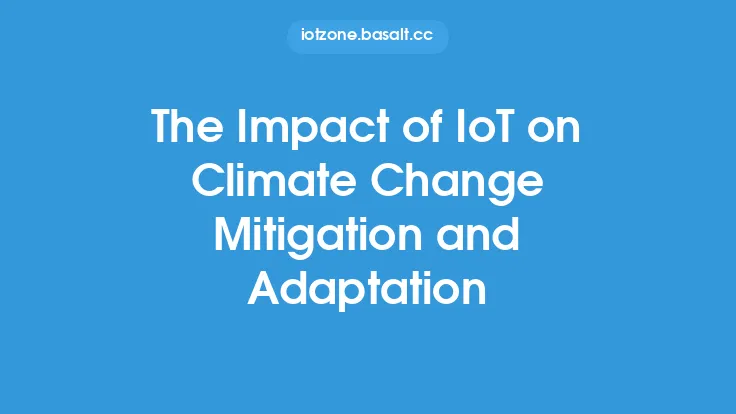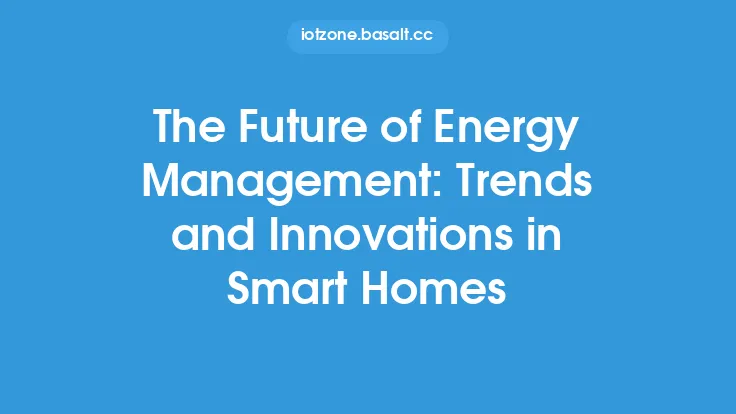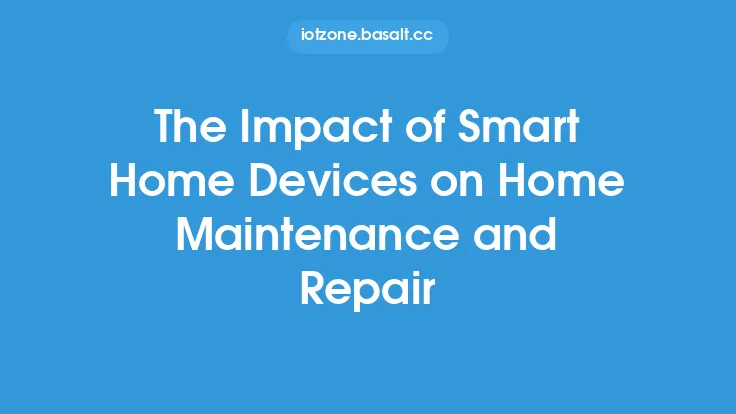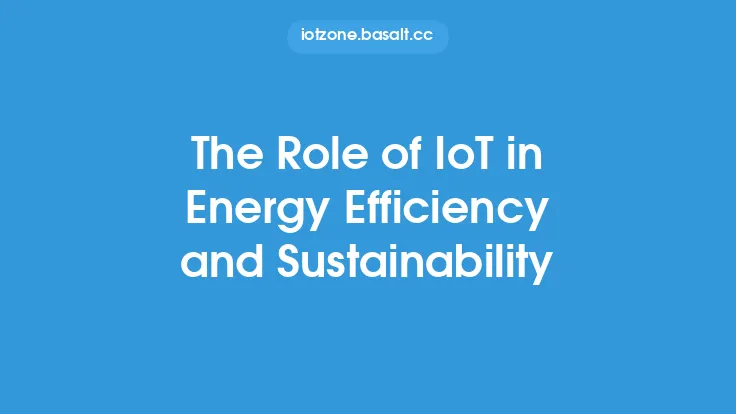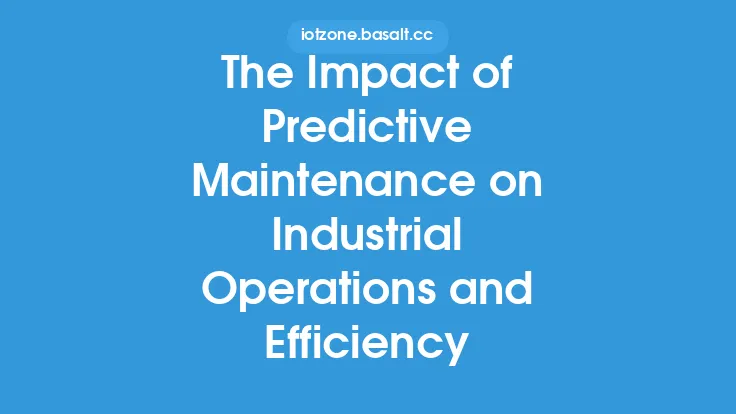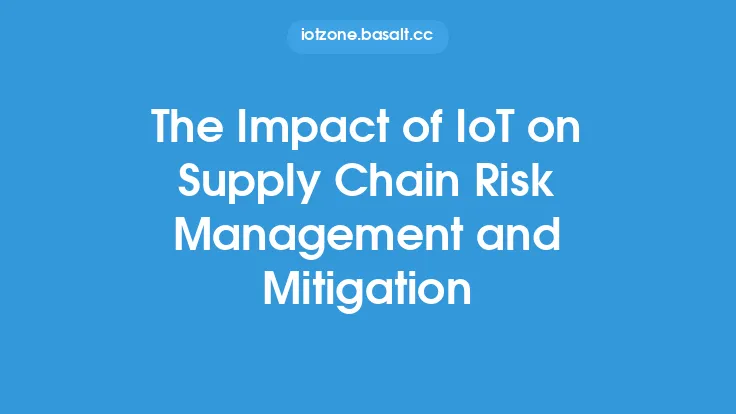The integration of the Internet of Things (IoT) with energy storage and renewable energy sources is transforming the way we generate, distribute, and consume energy. IoT technology has the potential to revolutionize the energy sector by enabling real-time monitoring, control, and optimization of energy systems. In this article, we will explore the impact of IoT on energy storage and renewable energy sources, and how it is shaping the future of the energy industry.
Introduction to IoT in Energy Storage
IoT technology is being increasingly used in energy storage systems to improve their efficiency, reliability, and performance. Energy storage systems, such as batteries, play a critical role in stabilizing the grid and ensuring a stable supply of energy. IoT sensors and devices can be used to monitor the state of charge, state of health, and other parameters of energy storage systems in real-time. This data can be used to optimize the charging and discharging of batteries, predict maintenance needs, and prevent failures. For example, IoT-based battery management systems can detect potential issues such as overheating, overcharging, or deep discharging, and take corrective action to prevent damage to the batteries.
Impact of IoT on Renewable Energy Sources
IoT technology is also having a significant impact on renewable energy sources such as solar and wind power. IoT sensors and devices can be used to monitor the performance of renewable energy systems in real-time, enabling real-time monitoring and control of energy generation. For example, IoT-based solar panel monitoring systems can track the performance of individual solar panels, detect faults or underperformance, and optimize energy generation. Similarly, IoT-based wind turbine monitoring systems can monitor the performance of wind turbines, detect potential issues, and optimize energy generation. IoT technology can also be used to predict energy generation from renewable sources, enabling utilities and grid operators to better manage the grid and ensure a stable supply of energy.
Advanced IoT Technologies for Energy Storage and Renewable Energy
Several advanced IoT technologies are being used in energy storage and renewable energy systems, including artificial intelligence (AI), machine learning (ML), and edge computing. AI and ML algorithms can be used to analyze data from IoT sensors and devices, predict energy generation and demand, and optimize energy storage and renewable energy systems. Edge computing can be used to process data from IoT devices in real-time, reducing latency and enabling faster decision-making. For example, edge computing can be used to analyze data from solar panels or wind turbines, and make decisions about energy generation and storage in real-time.
Benefits of IoT in Energy Storage and Renewable Energy
The integration of IoT with energy storage and renewable energy sources has several benefits, including improved efficiency, reliability, and performance. IoT technology can help to optimize energy generation and storage, reduce energy waste, and predict maintenance needs. IoT technology can also enable real-time monitoring and control of energy systems, enabling utilities and grid operators to better manage the grid and ensure a stable supply of energy. Additionally, IoT technology can help to reduce the cost of energy storage and renewable energy systems, making them more competitive with traditional fossil fuel-based energy sources.
Challenges and Limitations of IoT in Energy Storage and Renewable Energy
Despite the benefits of IoT in energy storage and renewable energy, there are several challenges and limitations that need to be addressed. One of the main challenges is the lack of standardization in IoT devices and systems, which can make it difficult to integrate different systems and devices. Another challenge is the security of IoT devices and systems, which can be vulnerable to cyber attacks and data breaches. Additionally, the high upfront cost of IoT devices and systems can be a barrier to adoption, particularly for small-scale energy storage and renewable energy systems.
Future of IoT in Energy Storage and Renewable Energy
The future of IoT in energy storage and renewable energy is promising, with several trends and innovations emerging. One of the main trends is the increasing use of AI and ML algorithms to analyze data from IoT devices and optimize energy storage and renewable energy systems. Another trend is the growing use of edge computing to process data from IoT devices in real-time, reducing latency and enabling faster decision-making. Additionally, the development of new IoT devices and systems, such as IoT-based battery management systems and IoT-based solar panel monitoring systems, is expected to continue to drive innovation in the energy sector.
Real-World Applications of IoT in Energy Storage and Renewable Energy
There are several real-world applications of IoT in energy storage and renewable energy, including smart homes, smart buildings, and smart grids. For example, IoT-based energy management systems can be used to monitor and control energy generation and storage in smart homes and buildings, optimizing energy efficiency and reducing energy waste. IoT-based smart grid systems can be used to monitor and control energy distribution and transmission, enabling utilities and grid operators to better manage the grid and ensure a stable supply of energy. Additionally, IoT-based energy storage systems can be used to stabilize the grid and ensure a stable supply of energy, particularly in areas with high penetration of renewable energy sources.
Conclusion
In conclusion, the integration of IoT with energy storage and renewable energy sources is transforming the way we generate, distribute, and consume energy. IoT technology has the potential to revolutionize the energy sector by enabling real-time monitoring, control, and optimization of energy systems. While there are several challenges and limitations that need to be addressed, the benefits of IoT in energy storage and renewable energy are clear. As the energy sector continues to evolve and innovate, it is likely that IoT will play an increasingly important role in shaping the future of energy storage and renewable energy.
